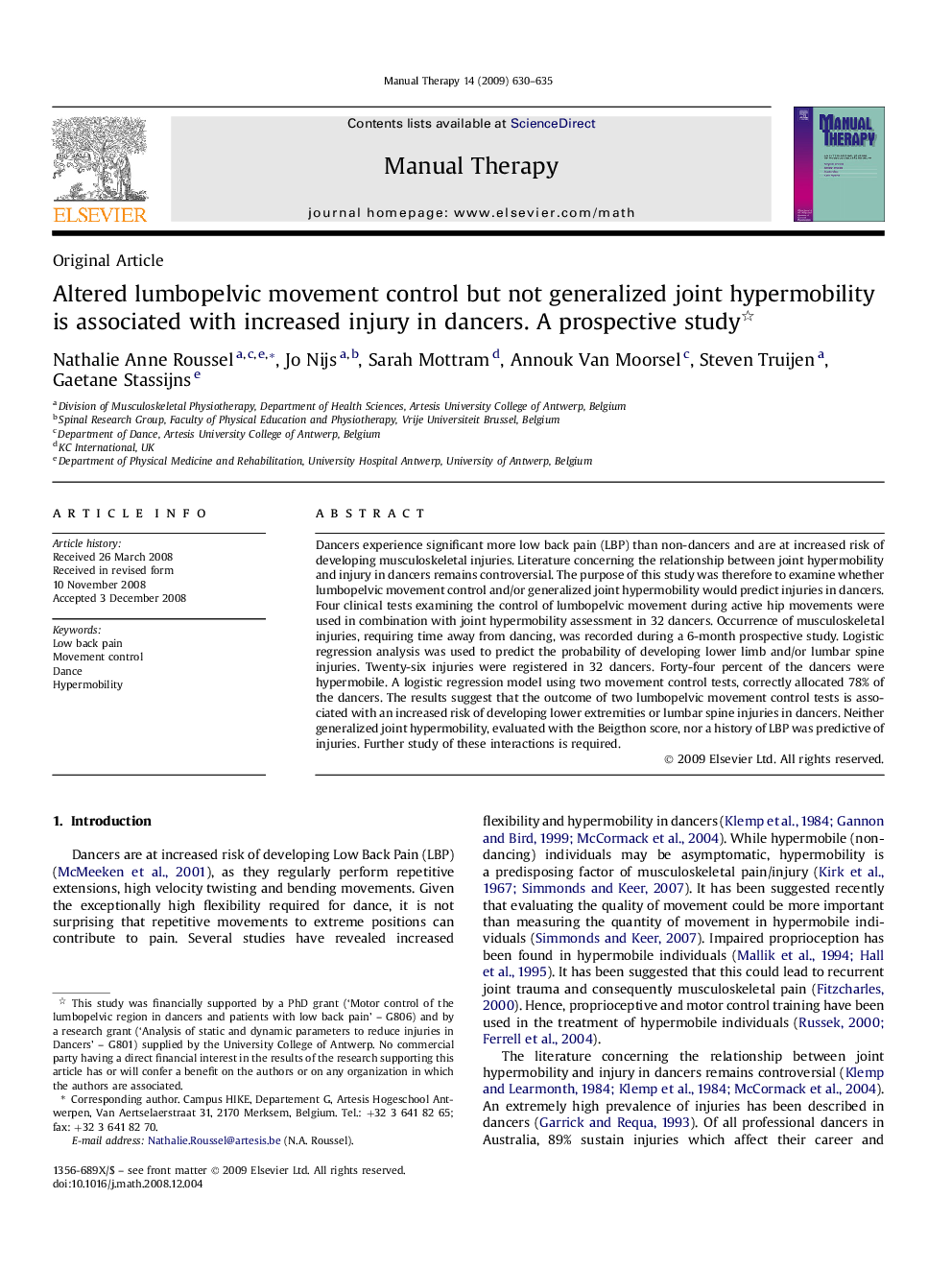| Article ID | Journal | Published Year | Pages | File Type |
|---|---|---|---|---|
| 2625915 | Manual Therapy | 2009 | 6 Pages |
Dancers experience significant more low back pain (LBP) than non-dancers and are at increased risk of developing musculoskeletal injuries. Literature concerning the relationship between joint hypermobility and injury in dancers remains controversial. The purpose of this study was therefore to examine whether lumbopelvic movement control and/or generalized joint hypermobility would predict injuries in dancers. Four clinical tests examining the control of lumbopelvic movement during active hip movements were used in combination with joint hypermobility assessment in 32 dancers. Occurrence of musculoskeletal injuries, requiring time away from dancing, was recorded during a 6-month prospective study. Logistic regression analysis was used to predict the probability of developing lower limb and/or lumbar spine injuries. Twenty-six injuries were registered in 32 dancers. Forty-four percent of the dancers were hypermobile. A logistic regression model using two movement control tests, correctly allocated 78% of the dancers. The results suggest that the outcome of two lumbopelvic movement control tests is associated with an increased risk of developing lower extremities or lumbar spine injuries in dancers. Neither generalized joint hypermobility, evaluated with the Beigthon score, nor a history of LBP was predictive of injuries. Further study of these interactions is required.
